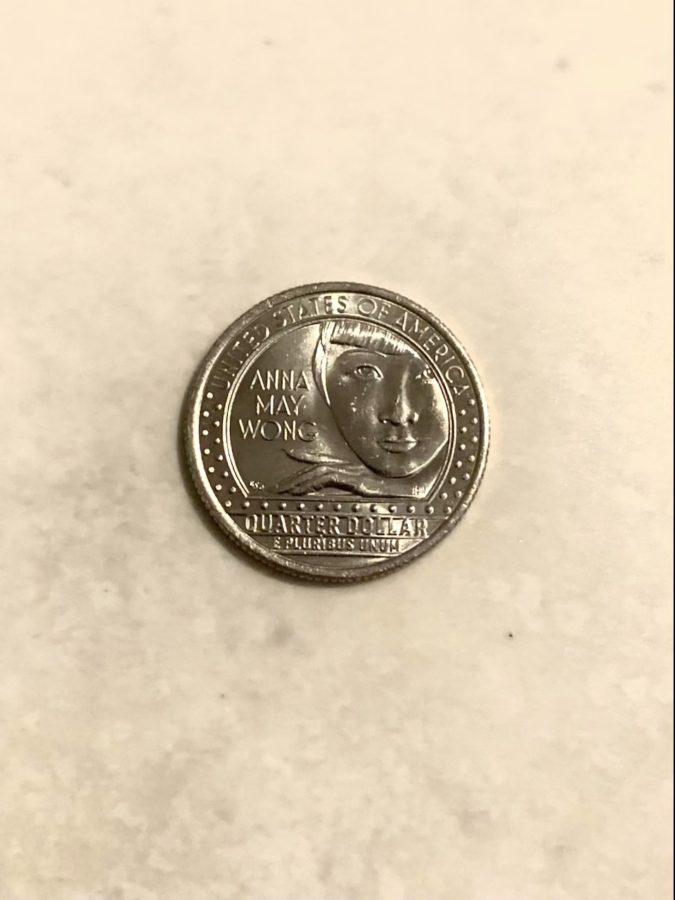First Chinese American Actress to Appear on American Currency
Anna May Wong is featured on the new design of the quarter.
Coins are pertinent assets that are used every single day all over the nation. When one thinks of an American coin, it most likely prompts a picture of a disk showcasing famous United States presidents and historical political figures. However, diverse representation has remained a misfortune for the minorities of America. It took one artist and actress to commence a step towards more representation; the new coin featuring Anna May Wong, designed by Emily Damstra, is the first of many.
Wong Liu Tsong, known professionally as Anna May Wong, was a pioneering golden-age actress often recognized as Hollywood’s first Chinese American cinematic star. Booking her first big role in 1922, her multifaceted career spanned silent film, sound film, television, stage, and radio. Beginning her career in the silent picture era, Wong has performed in over 60 films, and her contributions were recognized through receiving a star on the Hollywood’s Walk of Fame in 1960. Designer of the coin, Emily Damstra, stated in a press release, “Many prominent actors from the 1920s and 1930s saw their name framed by light bulbs on movie theater marquees, so I thought it made sense to feature Anna May Wong in this way.” Damstra goes on to add, “Along with the hard work, determination, and skill Anna May Wong brought to the profession of acting, I think it was her face and expressive gestures that really captivated movie audiences, so I included these elements next to her name.” Mint Director Ventris Gibson continues, “This quarter is designed to reflect the breadth and depth of accomplishments by Anna May Wong, who overcame challenges and obstacles she faced during her lifetime.”
Wong advocated for more Asian representation in Hollywood and fought conventional portrayals at a time when “yellowface” overshadowed the business and the Chinese Exclusion Act was still in effect. When Anna May Wong initially arrived in Hollywood in the 1920s, white directors and actors ruled the industry. Representatives of different ethnicities were rarely casted, but when they were cast at all, it was usually to portray crude, stereotypical caricatures. Although it is a common misconception that diversity is abundant in the Hollywood industry, tokenism is the true term for these cases. Tokenism is when a casted individual from a marginalized community’s sole purpose is to serve as a symbolic effort to construct the illusion of an inclusive and diverse environment. In a 1933 interview with the Los Angeles Times, Anna May Wong vocalizes,“Why is it that the screen Chinese is nearly always the villain of the piece, and so cruel a villain – murderous, treacherous, a snake in the grass…we are not like that.”
Wong fought against Hollywood’s prejudiced beliefs that confined Asian American actresses to clichéd roles throughout their careers. According to the New York Times, she was irritated by restrictions at the time that prohibited actors of various races from kissing on screen, which would have precluded her from starring as the romantic lead alongside a white actor. Wong left the United States in 1928, upset by a lack of prospects in Hollywood, to pursue better roles in Europe, where she experienced greater fortune. Sophia Mou (9) expresses her thoughts on this historical event happening right before our eyes, saying, “I’m glad to be seeing progression in representation, starting with an Asian American woman.” According to the National Women’s History Museum, Wong died of a heart attack in 1961, at the age of 56, but forever left an impact on the world.

As a junior, Noelle Wu will be continuing newspaper for the third year. She is one of the three Editors-In-Chief, and is very excited for the upcoming...




























Tiana Zhang • Dec 17, 2022 at 4:50 PM
good job!!